1. Unlock on-site search opportunities
Improving your internal search configuration can also help you boost your sales. Look at your internal search data from GA to identify what users are searching for and what products are being returned in each case to identify potential issues such as:
- Users struggling to find certain information and therefore relying on internal search.
- Products returned by a search page not answering user intent and therefore contributing to higher exit rates and search refinements.
- Products missing on the search page returned to the user (products returned not matching the number of products stocked).
When downloading the data, include at least 6 months to make sure you do not miss opportunities out because of seasonality. I also recommend removing any search terms with a low number of searches and low exit rate (you want to focus on quick wins that will drive the biggest impact).
Below are some of the things you can look at:
- Order by number of searches to find patterns on what type of pages users are struggling to find and provide recommendations to improve this. For example, if you see plenty of searches around brand terms, it might be a sign that your users are struggling to find brand pages. You can then make these more visible on the site.
- Look for content gaps. These are internal search queries with high search volumes that your business is stocking, but there’s no landing page on the site. In this case, create a landing page that matches that query.
- Look at search terms with high search refinements. This can be caused by search results pages not answering users’ intent. When your site’s search algorithm does not display the most relevant items, you might need to do some manual adjustments to bring the most relevant results to the top of the list. For example, for one of our clients, we realised that when users were searching for ‘front fastening bras’, clothing products were returned by the search page instead of bras.
- High search refinements can also be a sign of search pages returning a low number of products. You can do a site search in Google to find out whether your site is stocking more products than the ones returned by the search page.
- You will probably find some terms where the configuration of the search should be amended to cater for typos and misspellings (e.g. a user searching ‘bluebells’ only gets one product returned whereas a user typing ‘bluebella’ gets a wider range of items).
- The site search configuration should also handle synonyms and alternate terms to avoid it returning incomplete or zero results that could frustrate users. It’s quite likely you will find some instances of these on your list, which will need to be fixed.
- Enabling predictive searches to show visitors popular queries on the word they are searching for will quite likely have a positive impact on user engagement.
2. Optimise your category pages for conversions
It’s also important to make sure that your transactional pages (category and product pages) are optimised for conversions. Below are some features that will aid retail category page conversion to your site:
- Allow customers to see the products on a ‘quick view’ without having to leave the category page. It costs time to load new pages and users like to take a glance at several products before they decide on visiting a product page.
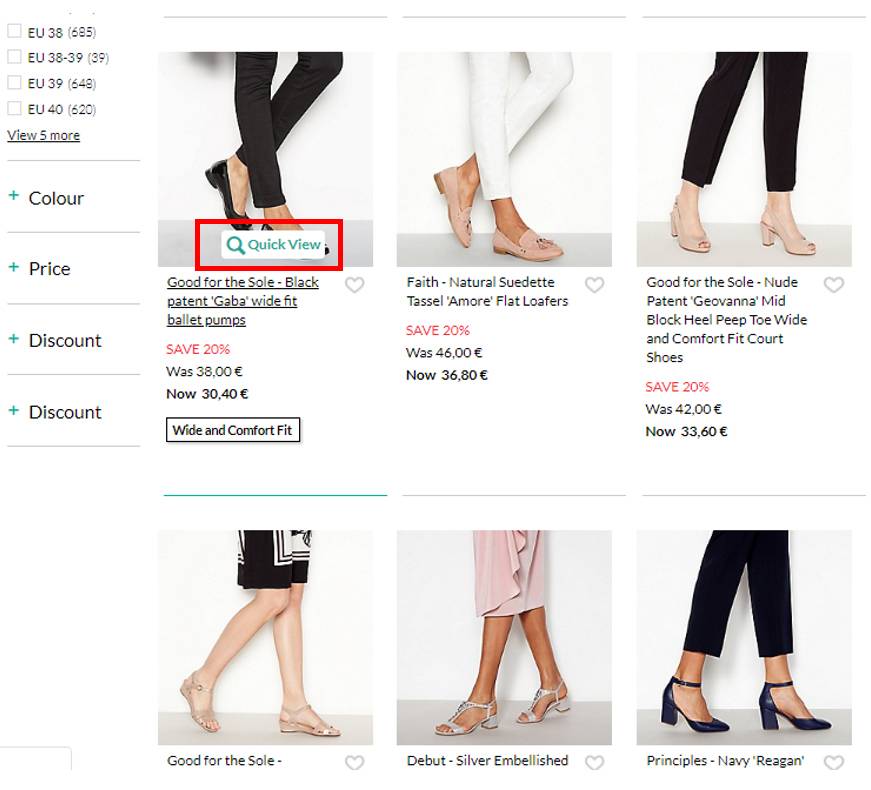
- Show stock availability on your PLPs and place out of stock products at the bottom (to avoid disrupting the user’s journey and having customers becoming frustrated).
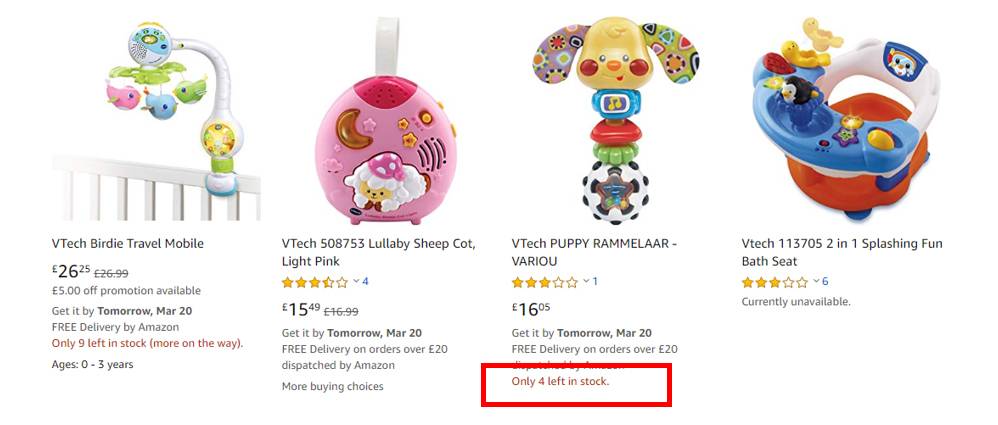
- Enrich product snippets on PLPs with rating stars (if you have product reviews), available colours and sizes, ‘save for later’ button, discounted price, offers, etc.
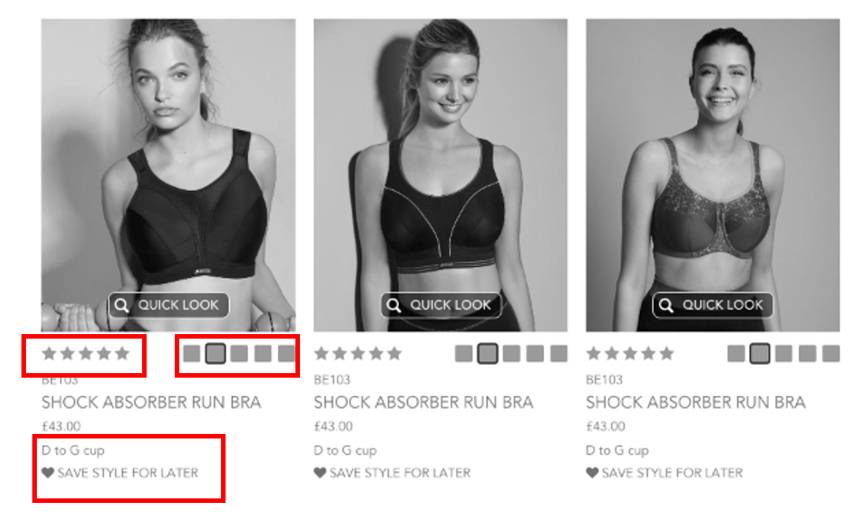
- Highlight your top products and most viewed items in category pages.
- Use breadcrumbs. These help users track where they are on your website and give them a sense of direction when navigating from one page to another. A breadcrumb could look like this: Homepage > Bras > Underwired Bras – each linking to their respective pages.
- Cross-link related categories and subcategories. For example, if you have a product page for helmets, try to add a link for gloves or boots. These links can be inserted within the copy or on a ‘similar categories’ section.
3. Popular products with low conversions
Start by performing comparisons between search demand and conversions at a URL level. You need to find product pages with large amount of impressions in GSC that are not being added to the basket (low conversion rate). While these products are in high demand, a low conversion rate indicates there might be something stopping people from purchasing. You can align this with your seasonality strategy mentioned here, since product demand will vary through the year, or repeat this exercise a few times a year (e.g. every quarter).
You can also do some CRO analysis on those landing pages to find out why they’re not converting. Below, I have summarised some of the most common patterns we find when doing this exercise for some of our clients’ websites:
- Lack of reviews: we often find a correlation between low conversions and lack of reviews. Not having reviews can seriously reduce the conversion rate of your product pages. Therefore, we recommend actively encouraging users to leave a review on these underperforming landing pages (e.g. you can offer incentives to users for leaving a review).
- Low review score: low review scores are often responsible for bad performance from a conversion point of view. In these instances, we recommend going through these manually, replying to reviews if possible and identifying what the causes are for the bad review. If there are common areas of improvement in products, you can then focus on implementing these.
- Low stock on popular sizes: hand these to relevant product teams and see if there is anything they can do to stock missing sizes.
- Lack of images: if some product pages have only 1 or 2 images, go through these and add a few more images. Follow the recommendations about product images outlined in my previous ecommerce quick wins article.
- Short product descriptions: if your product pages have short product descriptions, review these and extend the copy where possible, including all the main product details. Besides improving your page conversions, it’s quite likely this will have a positive impact in rankings if you include relevant keywords, too.
4. Optimise your product pages for conversions
When it comes to product pages, here are a few ideas on how you can boost your sales on your product page template:
- Use excellent images for your products: on my previous article I already covered how important is to optimise your images for Google Image search. But besides search engines, these are also important for your users. Photographs sell products by helping shoppers to imagine what it will be like to own the product and therefore, good photography can be key when it comes to increasing your conversion rate. Furthermore, good images can be more effective at attracting inbound links and generating traffic when shared on third-party websites like Pinterest.
- Make sure your delivery messaging and return policy are clearly explained on your product pages. Include details on when the product will be dispatched and will arrive, what are the delivery options you offer (e.g. same day delivery, weekend delivery, free shipping, speedy delivery, etc.) and make sure all terms and conditions of return are accessible and clear on your product page template.
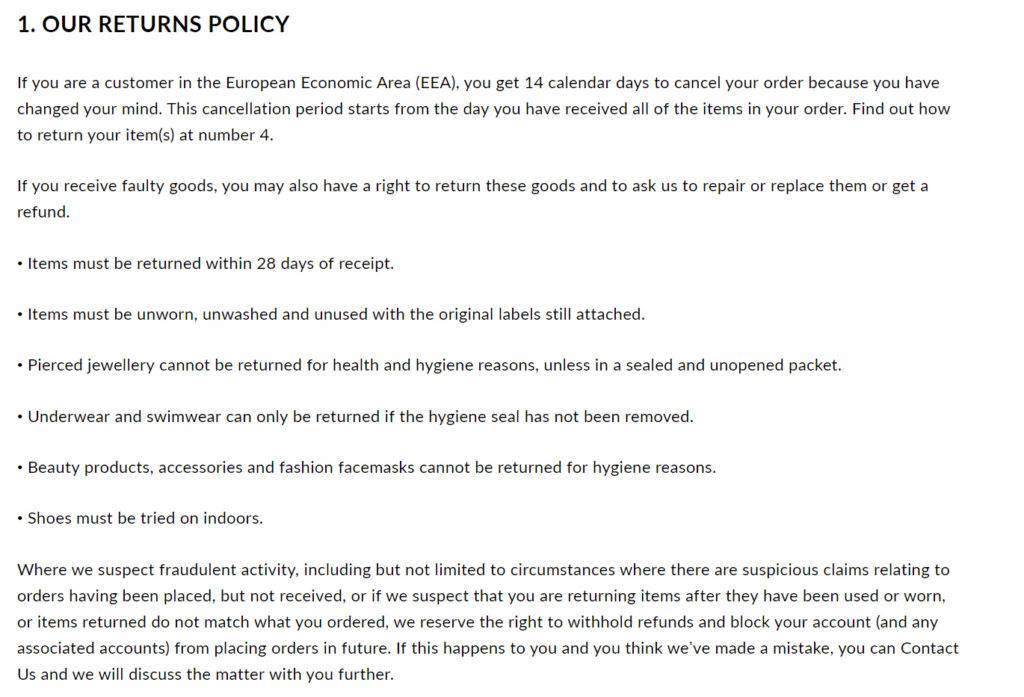
- Special promotions and reward schemes: offering reward schemes to your customers can also be a good way for aiding conversions. If you do this, you can add special promotions below the product price and show how many points a user can collect for the purchase. For example, Debenhams’ product pages have a reference to loyalty points under the Add to bag CTA:
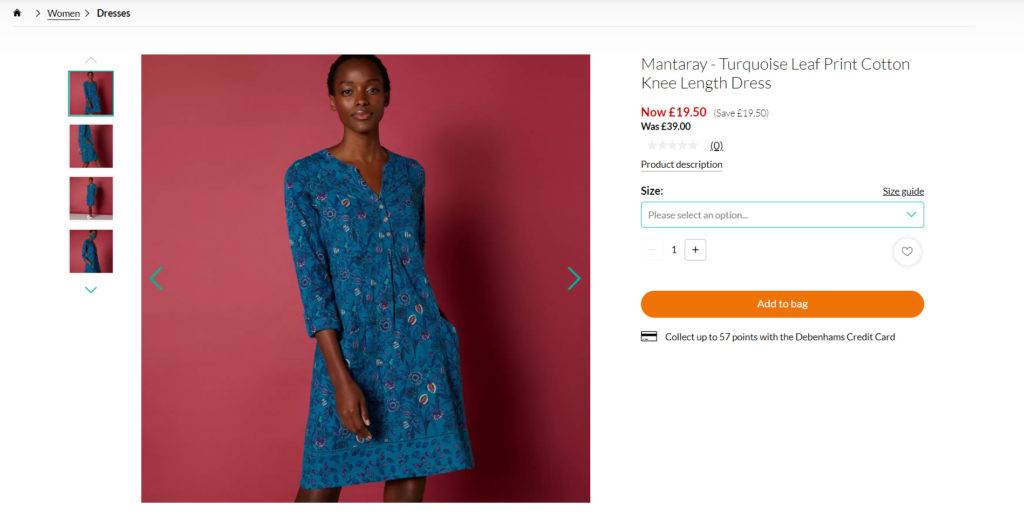
Remember to mention any other key selling points, such as two-year guarantees. This gives the buyer a final bit of encouragement and trust before clicking to buy.
- Enrich your product page template with relevant content: using videos, linking to related content, such as style tips, fitting guides or guides on how to use the product can be really good ways of boosting engagement on your website and increasing your conversion rate.
- Link to other product variants: if the product is available on other sizes or colours resolvable in another URL, you should cross-link them. When doing so, remember to include ‘in stock’ availability, making it obvious which variants are available to avoid users frustrations (customers who clicking through several options to choose a size before finding it is out of stock):
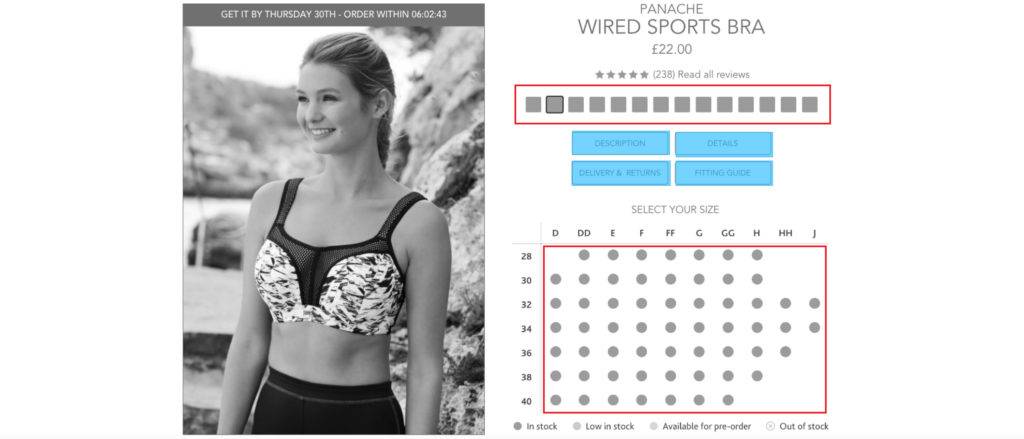
- Write compelling product page copy that converts: finally, if you or your copywriting team are looking to increase conversions for your product pages, take a look at this guide on how to improve the performance of your product pages, which includes tips on adding urgency, social commerce, gaining user trust, and more.
If you want to expand more on this subject, I’d suggest reading this article, which contains various methods of SEO optimisation for product pages.
There are so many ways to make the most of your existing traffic, but these tips will be a good start. If you need any extra help implementing these tips or want to discover more ways to optimise your site, please get in touch!
